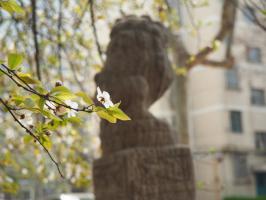Where Did the CCC Plant Trees?
The Civilian Conservation Corps (CCC) was a New Deal program established in 1933 to combat unemployment during the Great Depression. The program operated until 1942 and employed over three million young men across the United States. One of the most notable achievements of the CCC was its massive reforestation efforts, which saw millions of trees planted in various locations across the country.
Eastern United States
The CCC planted trees across the eastern part of the United States, focusing on areas that had been heavily deforested due to logging, mining, and other industrial activities. Some of the notable locations where the CCC planted trees in the eastern United States include the Great Smoky Mountains National Park in Tennessee and North Carolina, the George Washington and Jefferson National Forests in Virginia, and the Shenandoah National Park in Virginia.
Western United States
In the western part of the United States, the CCC focused on reforestation efforts in areas that had been heavily impacted by wildfires. Some of the notable locations where the CCC planted trees in the western United States include the Angeles National Forest in California, the Coconino National Forest in Arizona, and the Mount Hood National Forest in Oregon.
Other Locations
The CCC also planted trees in other locations across the United States, including the Midwest and the Great Plains. In some cases, the CCC planted trees to serve as windbreaks and to prevent soil erosion. Some of the notable locations where the CCC planted trees in these regions include the Wind Cave National Park in South Dakota and the Niobrara National Scenic River in Nebraska.
Legacy
The reforestation efforts of the CCC have had a lasting impact on the environment and the economy. Through its efforts to plant trees, the CCC helped to restore the health of forests, prevent soil erosion, and create habitats for wildlife. The reforestation efforts also helped to create jobs and stimulate economic growth in the communities where the CCC operated. Today, many of the forests that were planted by the CCC are thriving and are important recreational destinations for millions of Americans.
Overall, the CCC played an instrumental role in the reforestation efforts of the 20th century. Its legacy continues to be felt across the United States, and the impact of its work is still visible in the forests that were planted by the CCC over 80 years ago.

 how many times do yo...
how many times do yo... how many planted tre...
how many planted tre... how many pine trees ...
how many pine trees ... how many pecan trees...
how many pecan trees... how many plants comp...
how many plants comp... how many plants can ...
how many plants can ... how many plants and ...
how many plants and ... how many pepper plan...
how many pepper plan...






























